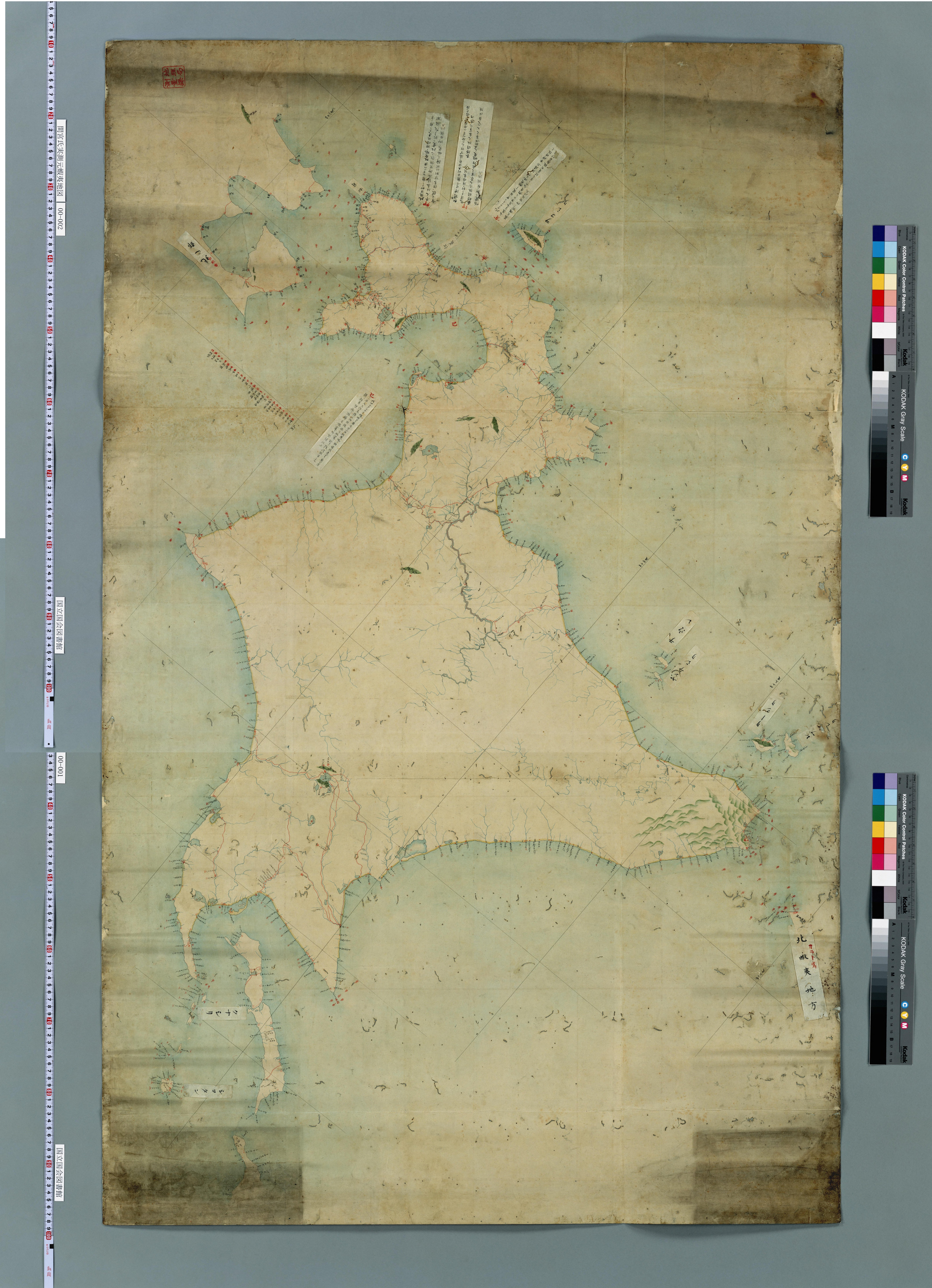
‘Mandala of the Great Cranial Protuberance’ (Daibutchō mandara 大仏頂曼荼羅), hanging scroll, ink and colors on silk, gold-leaf, decorated with thin metal strips, 125.5 x 88.5 cm, Heian period, 12th century, Important Cultural Property. Attribution & Image creation: Nara National Museum/photo by: Sasaki Kyōsuke; URL: https://imagedb.narahaku.go.jp/viewer.php?requestArtCd=0000000046
The human geographer Ōji Toshiaki has coined the word ‘pictorial map’ (echizu 絵地図) in the book ‘Shapes of the world in maps’ (Echizu no sekaizō 絵地図の世界像). His definition goes beyond the common use of echizu for maps, which combine pictures with geographic information (such as modern tourist maps), by meaning ‘old maps’. His reasoning is that old maps, such as medieval estate maps, can be confused with pictures. Again, mandala, used in Esoteric Buddhism, can be considered maps, since they represent the world. But they are highly abstract representations thereof. In contrast, a view from an airplane can remind us of a map, because maps can be quite precise representations of absolute space. According to Ōji, echizu captures the artistic, abstract and scientific character of old maps.
An example is the ‘Mandala of the Great Cranial Protuberance’. It shows two forms of Ichiji Kinrin, which personifies the supreme virtue or Dainichi Nyorai, the Supreme Buddha of the Cosmos from which the entire universe emanates. Dainichi Kinrin, referring to Dainichi Nyorai in the Diamond Realm, is seated within a solar disk in front of Mount Sumeru (Shumisen 須弥山), the center of the universe, surrounded by seas and continents. Its hands display the knowledge-fist mudra (chiken-in 智拳印). Seven jewels (shippō 七宝), the attributes of a universal ruler, are arranged around the disk. Bamboo groves and peonies form a frame to the right and left. Above, Shaka Kinrin 釈迦金輪, referring to Dainichi Nyorai in the Womb Realm, is seated within a lunar disk. It has a golden wheel placed on its lap, while forming a medidation mudra (jōin 定印). In the foreground, the dragon king and the dragon god rise out of the sea. The circular disks refer to an abstract representation of the universe, whereas the elements of landscape scenery, which are remindful of a garden, refer to the totality of the world. Ōji’s reasoning is convincing, but you are unlikely to find old Japanese maps under the keyword echizu.

